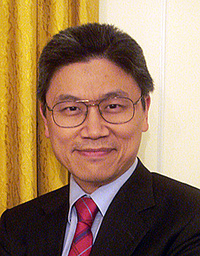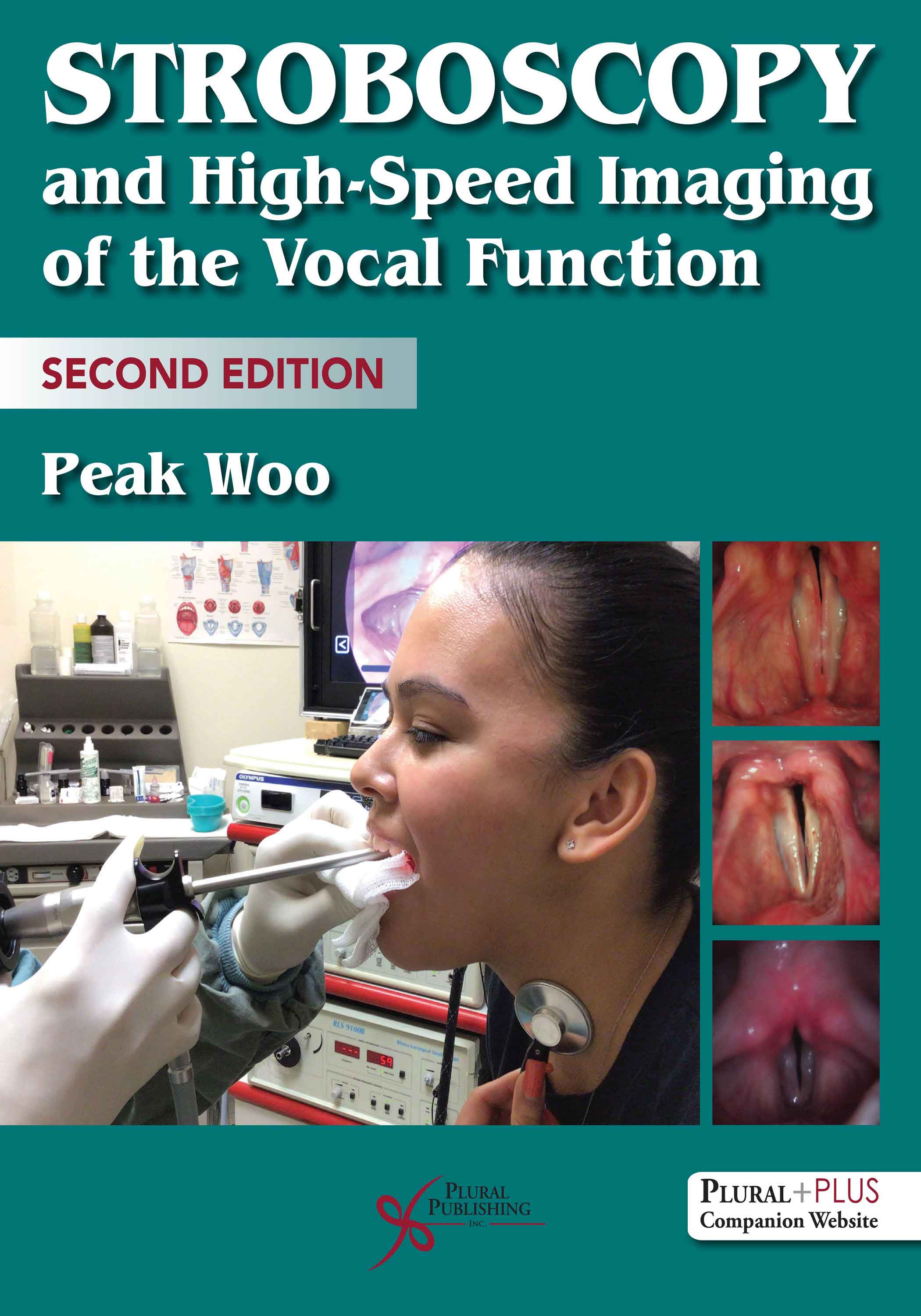
Stroboscopy and High-Speed Imaging of the Vocal Function
Second Edition
Peak Woo
Details: 437 pages, Full Color, Hardcover, 8.5" x 11"
ISBN13: 978-1-63550-236-7
© 2022 | Available
Purchase
Stroboscopy and High-Speed Imaging of the Vocal Function, Second Edition presents a complete picture of the art and science of stroboscopy. This unique professional resource includes not only comprehensive coverage of the imaging process, but also the disease process that exists in benign lesions, cancer, and neuropathology. Comparisons of normal images with pathologies are included to enhance readers’ diagnostic skills, and the use of stroboscopic images before and after therapy to determine results enhances their clinical skills. The book also covers the entire range of laryngeal imaging for diagnostics, including rigid endoscopy, videostroboscopy, fiberoptic laryngoscopy, and high-speed imaging.
Written by a physician who works in a multidisciplinary environment, the book outlines the roles of the otolaryngologist, speech-language pathologist, voice scientist, and singing teacher in the clinical examination. Unparalleled full-color illustrations appear throughout.
New to the Second Edition
- New chapter on High Speed Imaging
- Updated imaging of vocal fold examination techniques
- Many added images and illustrations with enhanced figures using video montage.
- Fully updated to reflect the current research with many new references added from 2010 to 2020
- References are placed at the end of the relevant chapters.
- A PluralPlus companion website with high definition video examples of stroboscopy and high-speed imaging
From the Foreword
“Dr. Woo brings new information to the study of the voice through his expertise in stroboscopy, including the techniques to obtain the best video images and to interpret these images. He demonstrates that stroboscopy is one of the clinician’s most relevant working tool. More importantly, he combines the role of stroboscopy with how the tool is used for teaching, patient education, diagnosis, and research. Dr. Woo’s passion for the study of the voice, his unique expertise and talent for sharing his knowledge with others have allowed him to write a textbook that is enjoyable to read and provides a wealth of new visual information about the art and science of the larynx. Dr. Woo also stresses throughout the book that, thanks to the constant improvement in stroboscopy and the unique collaboration between the otolaryngologist and the speech-language pathologist, we have gained a better understanding of the voice and its disorders. Finally, he challenges us to continue to improve our understanding of the human voice by continually seeking innovative technologies, asking thought-provoking questions, and pursuing collaboration among voice professionals.”
—Thomas Murry, PhD
Professor, Otolaryngology Head and Neck Surgery, Loma Linda University Health
Peak Woo Discusses Stroboscopy and High-Speed Imaging of the Vocal Function, Second Edition
Reviews
“The number and quality of the endoscopic images is quite remarkable and do reflect the size of practice of the author. […]
As before, the second edition is divided into Basic Sciences (the Anatomy, Physiology and the physics of stroboscopic imaging) and then Disorders of the Larynx. In the former there is now extensive coverage of digital high-speed video endoscopy, or videokymography.
Throughout the book the illustrations of videostroboscopy are really well reproduced, but, even better, they are accompanied by a series of on-line examples. By definition, this is an exercise in dynamic movement and the videos are invaluable. Advances in chip-tip video (avoiding the need for fibres) and contact endoscopy and narrow band imaging also reflect recent advances.
In coverage of laryngeal pathology there are at least as many still endoscopic images as those of stroboscopy, making this a great atlas of disease and, so , of relevance to those with a general otolaryngology interest. Chapters cover such topics as Inflammatory, Autoimmune, Granulomatous, Neoplastic, Traumatic and Neurologic abnormalities.
I particularly appreciated a section entitled ‘Who is doing the Examination and what is the Stroboscopy Data Being Used for?’ (p137). This explains the different approaches to voice problems for the otolaryngologist and the Speech/Language Pathologist and the differing value of Stroboscopy for each of them.”
—Liam M Flood, FRCS, FRCSI, in Journal of Laryngology & Otology (November 2021)
“This is another noteworthy release by Plural Publishing. In this comprehensive textbook, Peak Woo, MD focuses on stroboscopy and high-speed imaging of voice production regarding basic science and laryngeal disorders. Its predecessor, Stroboscopy, by the same author in 2010, can now be replaced with this second edition that introduces a chapter dedicated to high-speed imaging of the larynx that is becoming prevalent in the research of voice production. The volume also contains elaborate details quoting cur-rent research on imaging techniques, enhanced images, and a spectacular array of video files via a companion website hosted by the publisher. The foreword is penned by the author’s professional friend and collaborator, Thomas Murry, MD, who is an equally accomplished voice scientist, researcher, and clinician.
The textbook consists of two parts, “Basic Science” and “Laryngeal Disorders.” The first section deals with the history and principles of stroboscopy and high-speed video imaging. The chapters related to anatomy and physiology of the larynx, histological properties of vocal fold layers, and the effects of disorders on these layers help build the foundation for readers, especially phonosurgeons, to understand the importance of vocal fold imaging in successful diagnostics and intervention… The chapters related to normal and abnormal vocal fold vibration amplify the importance of understanding basic science in clinical intervention of voice.
One of the most valuable resources in this textbook are the chapters that acclimate new clinicians and laryngologists to the set-up, recording, and interpretation of videostroboscopy. Visual analysis, a subjective study, requires extensive training; one can-not be oversaturated with information or experience. The video examples of every parameter involved in stroboscopic evaluation will indeed help to not only increase visual accuracy of findings but also enhance interpretation. These chapters are written for both neophyte and expert. The author also specifies how findings and interpretation can differ between speech language pathologists and laryngologists. This is crucial for students and early stage clinicians in both these professions.
The second section of this textbook, “Laryngeal Disorders,” covers almost all disorders from muscle tension dysphonia to malignancy of the larynx. In addition to giving an overview of these functional, organic, and neurogenic disorders, these chapters also include histopathology as and when needed, stroboscopic findings and its relevance to diagnosis and treatment, including phonosurgery.
Overall, this is a definitive source for clinicians, voice teachers, and re-searchers in the field of speech science, vocal arts, and medicine.”
–Nandhu Radhakrishnan, PhD, Kansas State University, in the Journal of Singing (May/June 2022)
“When I was asked to review this book, I was really looking forward to receiving it…Needless to say, it did not disappoint. The author, Peak Woo, is well known in laryngology circles and this is the second edition of this very informative book. This 437-page book is organized into two roughly equal parts. The first part consists of 12 chapters and is a detailed account of basic sciences, anatomy, mechanics and introduction to stroboscopy. The latter part is specifically on laryngeal disorders. There are associated web pages that house the 4k videos accompanying the text – these really help to add context.
This book will appeal to ENT surgeons with an interest in laryngology, as well as speech and language therapists. It has incredibly clear descriptors and possibly the best explanation of stroboscopy that I have ever read. It even goes so far as giving a historical narrative to stroboscopy from its 19th century evolution, from slits in wheels and laryngeal mirrors to modern-day high-quality digital image capture.
The anatomy and physiology within the first part is detailed enough for the majority of ENT surgeons and those in training for their final exam. The images and diagrams are of very high quality and will further aid one’s understanding. I particularly enjoyed the chapter on videokymography, mainly because it is something new and not used in my everyday practice; although after reading this chapter, I wish it was. Part one concludes with some good practical information on how to set up stroboscopy, as well as interpreting the images.
Part two is more focused on laryngeal disorders and, whilst this text is not an atlas of laryngology, there are some very high-quality images. It focuses on more common laryngeal pathology that anyone with an interest in laryngology will encounter on a frequemt basis. There are lots of high-quality montages explaining the effect of this pathology on the cords. Where surgery is the management of choice for these conditions, there is a small operative note explaining the steps involved.
The section on vocal fold paralysis paresis is particularly useful and often debated at meetings; here, it is summed up in a few pages.
Overall, it is clear why Peak Woo is regarded as an expert laryngologist, and this book highlights Peaks’ passion to pass on the information for one generation to the next. I would give this book 5/5/ and would encourage anybody undertaking and laryngeal work/voice clinic to read it just to further aid their own understanding.”
–Omar Mulla, ENT Consultant, Doncaster Royal infirmary, UK in ENT & Audiology News (September/October 2022)
Foreword by Thomas Murry, PhD
Preface
Acknowledgments
PART I. BASIC SCIENCE AND INTRODUCTION
Chapter 1. History of Stroboscopy and High-Speed Imaging of Laryngeal Vibration
History of Stroboscopy and High-Speed Video
References 5
Chapter 2. Principle of Stroboscopy
Stroboscopy and Talbot’s Law
References
Chapter 3. Anatomy of the Larynx and Histology of the Vocal Folds
Laryngeal Framework and Skeleton Cartilage
Hyoid Bone
Thyroid Cartilage
Cricoid Cartilage
Arytenoid Cartilages and Epiglottis
Fascia, Ligaments, and Joints of the Larynx
Anatomic Regions of the Larynx
Muscles of the Larynx
Extrinsic Muscles
Cricothyroid Muscle
Thyroarytenoid Muscle
Posterior Cricoarytenoid Muscle
Lateral Cricoarytenoid Muscle
Interarytenoid Muscle
Structure of the Vocal Folds
Pathology and the Involvement of the Vocal Fold Layers
References
Chapter 4. Vocal Fold Vibration and Phonatory Physiology
Criteria for Normal Vocal Fold Vibration
Normal Vibratory Behavior of the Vocal Folds
The Glottal Cycle
Acoustic and Aerodynamic Interactions With Vocal Fold Vibration
The Larynx as DC to AC Airflow Converter
Mass Effects on Vocal Fold Vibration
Effect of Stiffness on Vocal Fold Vibration
Effect of Tension Change on Vocal Fold Vibration
References
Chapter 5. Videokymography and High-Speed Digital Imaging of the Larynx
Disadvantages of Videostroboscopy
Videokymography
High-Speed Video Imaging of Vocal Vibration
Normal Onset and Offset of Vocal Fold Oscillation
Clinical Application of High-Speed Imaging in Diplophonia
References
Chapter 6. Normal Phonation and Vocal Fold Vibration
Dynamic Changes in the Glottal Cycle
Gender Differences
Age Differences
Intensity and Amplitude Modulation
Pitch Modulation
Intensity Modulation
Pitch and Amplitude Modulation Interactions
References
Chapter 7. Abnormal Vocal Fold Vibration
Introduction
Tension Abnormality
Increase in Tension of the Vocal Fold Ligament
Stiffness Abnormality
Glottal Closure and Level Difference
Unilateral Versus Bilateral Effects of Mass, Tension, and Stiffness
References
Chapter 8. Instrument and Clinical Operation
Introduction
Stroboscope Versus High-Speed Imaging of Vocal Fold Vibration
Use of Stroboscopy
Documentation
Clinical Care in Laryngology and Voice Care
Phonation Research
Image Processing and Automation
References
Chapter 9. The Clinical Examination Using Videostroboscopy
The Examination Room
Patient’s and Examiner’s Positions
Equipment Considerations
The Stroboscope
Videos and Cameras
Imaging Management
Endoscopes: Rigid, Fiberscope, and Videoendoscopes
Who Is Doing the Examination and What Is the Stroboscopy Data Being Used For?
Otolaryngologist Versus Speech Pathologist
Laryngoscopy Versus Phonoscopic Examination
References
Chapter 10. Stroboscopy Setup and Recording
Introduction
Rigid Endoscopic Examination
Performing the Examination
Anesthesia for Rigid and Flexible Laryngoscopy
Tokens Sampled During the Stroboscopy Examination
Avoiding the Pitfalls of Stroboscopy
Artifacts
References
Chapter 11. Avoiding Errors During Stroboscopy
Recording Artifacts
Closure Problems
Open Phase Predominates and Errors Related to Their Interpretation
Glottic Configuration Abnormalities
Phase Shift Findings During the Production of Falsetto
References
Chapter 12. Interpretation of Videostroboscopy
Introduction
Normal Variations
Phase Shifts at Falsetto and Flute Register Are Normal
Interpretation of the Stroboscopy Examination
Fundamental Frequency
Periodicity of the Vocal Fold Oscillation
Phase of Vocal Closure During Modal “ee” Phonation
Phase Symmetry
Configuration of Glottic Closure
Vocal Fold Edge
Amplitude
Mucosal Wave
Nonvibrating Segment
Synthesis of the Clinical Voice Disorder
References
PART II. LARYNGEAL DISORDERS
Chapter 13. Laryngeal Inflammation
Acute Inflammation
Chronic Laryngitis
Radiation Laryngitis
Reflux Laryngitis: Acute and Chronic
Candida Laryngitis
References
Chapter 14. Granulomatous Diseases of the Larynx
Granulomatous Laryngitis
Rheumatoid Nodules and Autoimmune Deposits of the Larynx
References
Chapter 15. Granulation and Contact Granuloma
Contact Ulcer, Granulation Tissue, and Intubation Granuloma
Pathophysiology/Histology
Risk Factors and Populations
Physical Examination
Differential Diagnosis
Treatment and Management
References
Chapter 16. Laryngeal Trauma
Introduction
Arytenoid Dislocation
Laryngeal Stenosis
References
Chapter 17. Vocal Fold Scar
Introduction
Rehabilitation Strategies for Vocal Fold Scar
Prevention of Vocal Fold Scar
Surgical Treatment in the Management of Scar
References
Chapter 18. Benign Mucosal Lesions
Introduction
Nodules
Polyps
Hemorrhagic Polyps
Polypoid Corditis/Reinke’s Edema
Laryngeal Edema
Cysts
Pseudocyst and Fibrovascular Lesion
Microwebs
Vascular Ectasia
Acute Vocal Fold Hemorrhage
Sulcus Vocalis
Mucosal Bridge
References
Chapter 19. Premalignant Lesions and Lesions of Uncertain Behavior
References
Chapter 20. Malignant Neoplasms of the Larynx
References
Chapter 21. The Aging Voice
References
Chapter 22. Benign Tumors and Nonneoplastic Masses of the Larynx
Laryngeal Papillomas
Verrucous Lesions of the Larynx
Other Reactive Lesions
Internal and External Laryngoceles, Saccular Cysts
References
Chapter 23. Vocal Fold Paralysis and Vocal Fold Paresis
Introduction
Signs and Symptoms
Voice Quality of Unilateral Vocal Fold Paralysis and Paralysis
Recurrent Laryngeal Nerve Paralysis and Paresis
Paralysis Versus Paresis
Role of Stroboscopy in Treatment Planning for Vocal Fold Paralysis and Paresis
Superior Laryngeal Nerve Paralysis
Combined Laryngeal Nerve Paralysis
Vocal Fold Paresis
References
Chapter 24. Irritable Larynx Syndrome
References
Chapter 25. Neurogenic Dysphonia
Spasmodic Dysphonia
Vocal Tremor
Neurogenic Diseases
References
Chapter 26. Functional Dysphonia and Muscle Tension Dysphonia
References
Chapter 27. Stroboscopy in the Management of Phonosurgery
Introduction
Preoperative Analysis of the Lesion Before Surgery
Intraoperative Use of Videostroboscopy
Postoperative Use of Stroboscopy in Analyzing Phonosurgery Results
References
Index
Purchase of Stroboscopy and High Speed Imaging of the Vocal Function, Second Edition comes with access to supplementary materials on a PluralPlus companion website.
To access the materials, you must register the access code printed on the inside front cover of your book on the companion website.
*Note: If you have purchased this book used or have rented it, your access code will not work if it was already redeemed by the original buyer of the book. Plural Publishing does not offer replacement access codes for used or rented books.
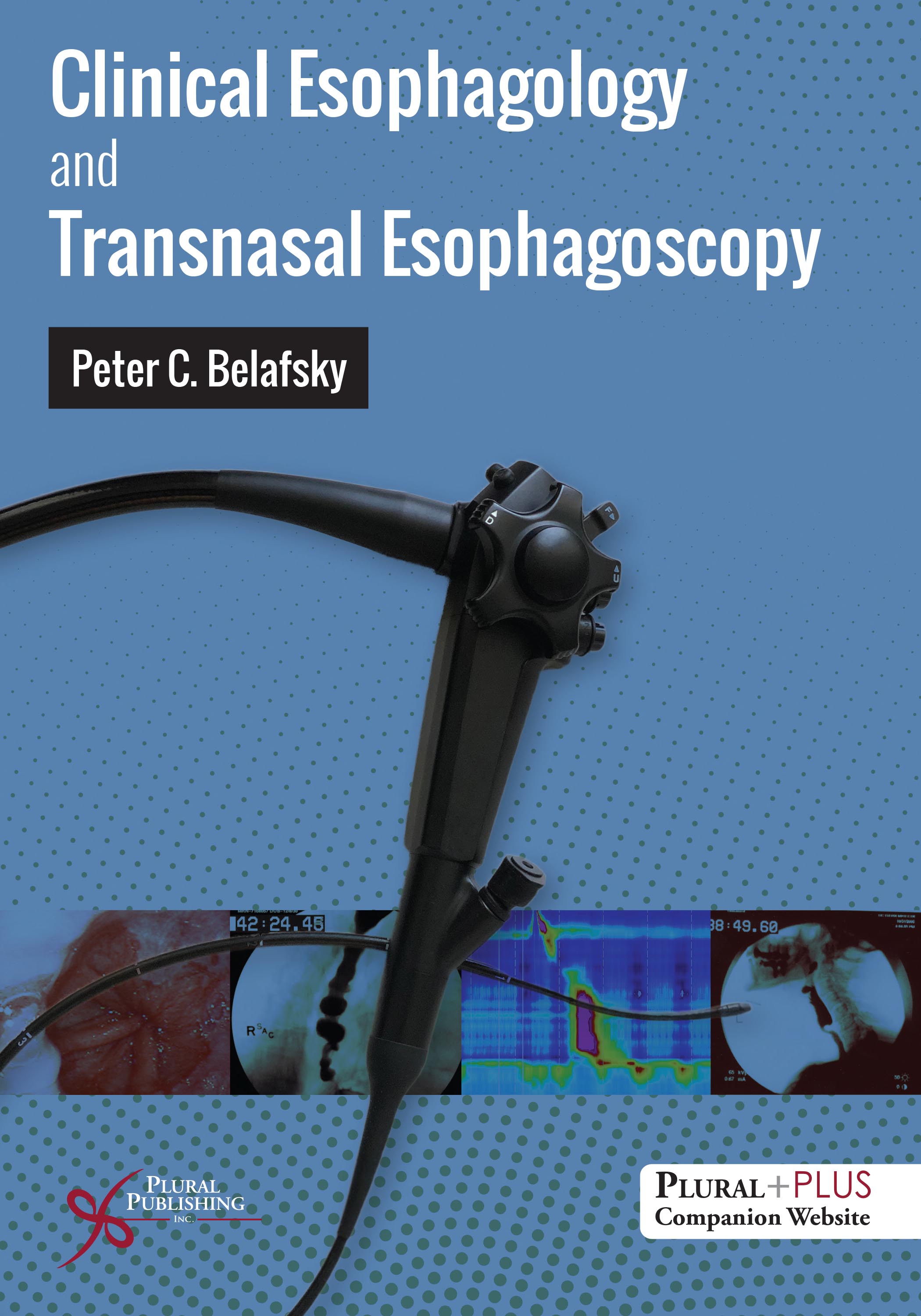
Clinical Esophagology and Transnasal Esophagoscopy
First Edition
Peter C. Belafsky
Details: 228 pages, Full Color, Hardcover, 7" x 10"
ISBN13: 978-1-94488-391-1
© 2019 | Available
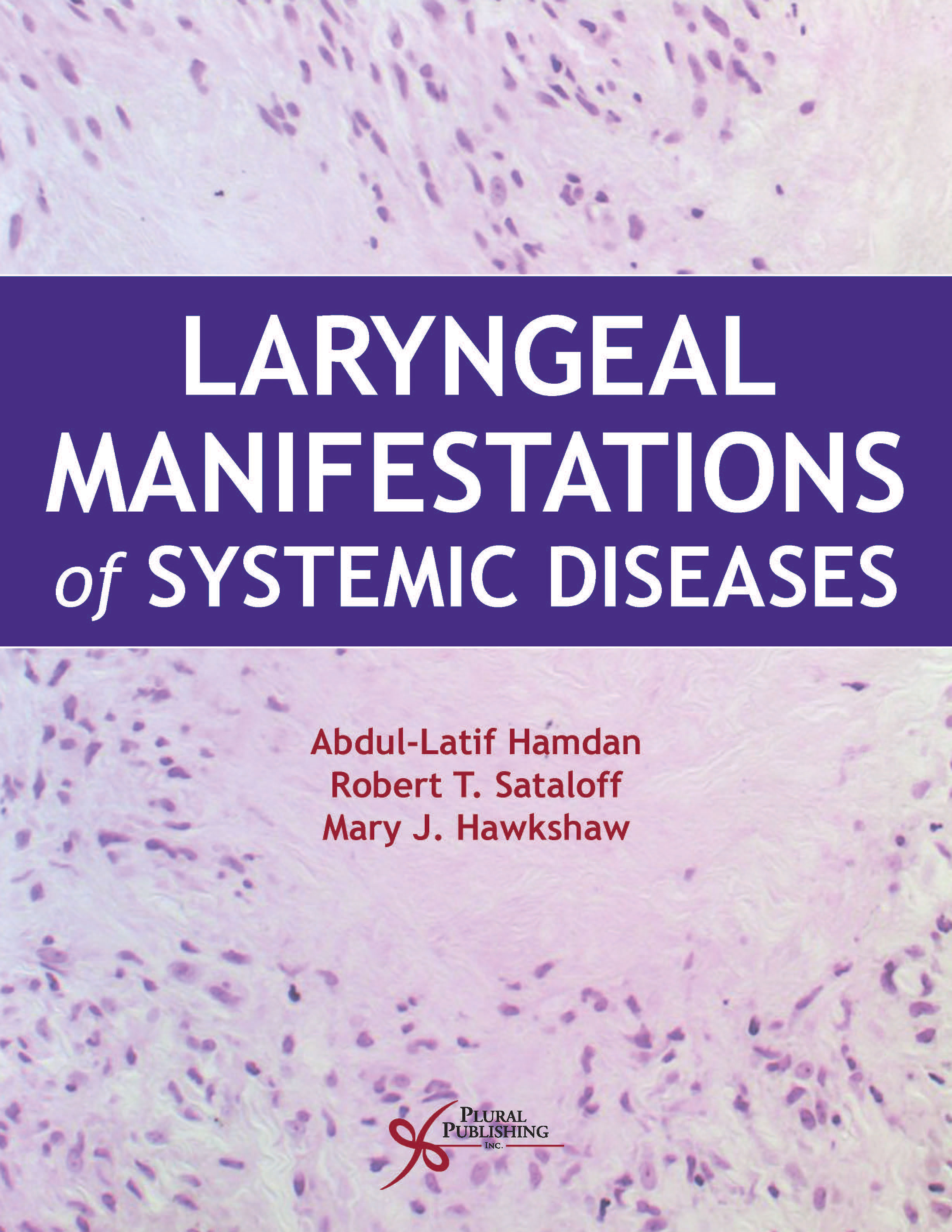
Laryngeal Manifestations of Systemic Diseases
First Edition
Abdul-Latif Hamdan, Robert T. Sataloff, Mary J. Hawkshaw
Details: 399, Full Color, Hardcover, 8.5" x 11"
ISBN13: 978-1-63550-129-2
© 2019 | Available
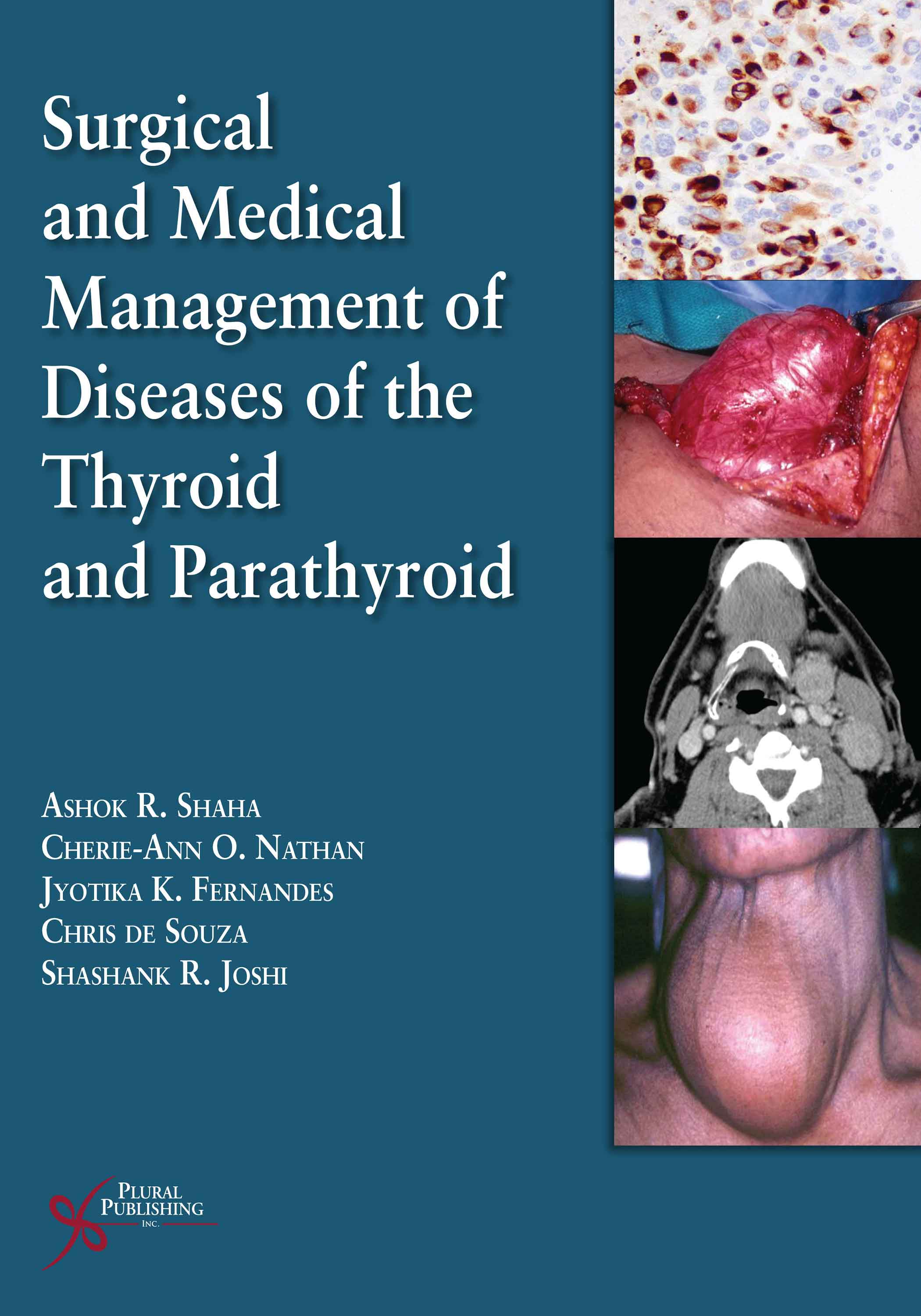
Surgical and Medical Management of Diseases of the Thyroid and Parathyroid
First Edition
Ashok R. Shaha, Cherie-Ann Nathan, Jyotika K. Fernandes, Chris de Souza, Shashank R. Joshi
Details: Ebook, 755 pages, Full Color
ISBN13: 978-1-59756-854-8
© 2020 | Available
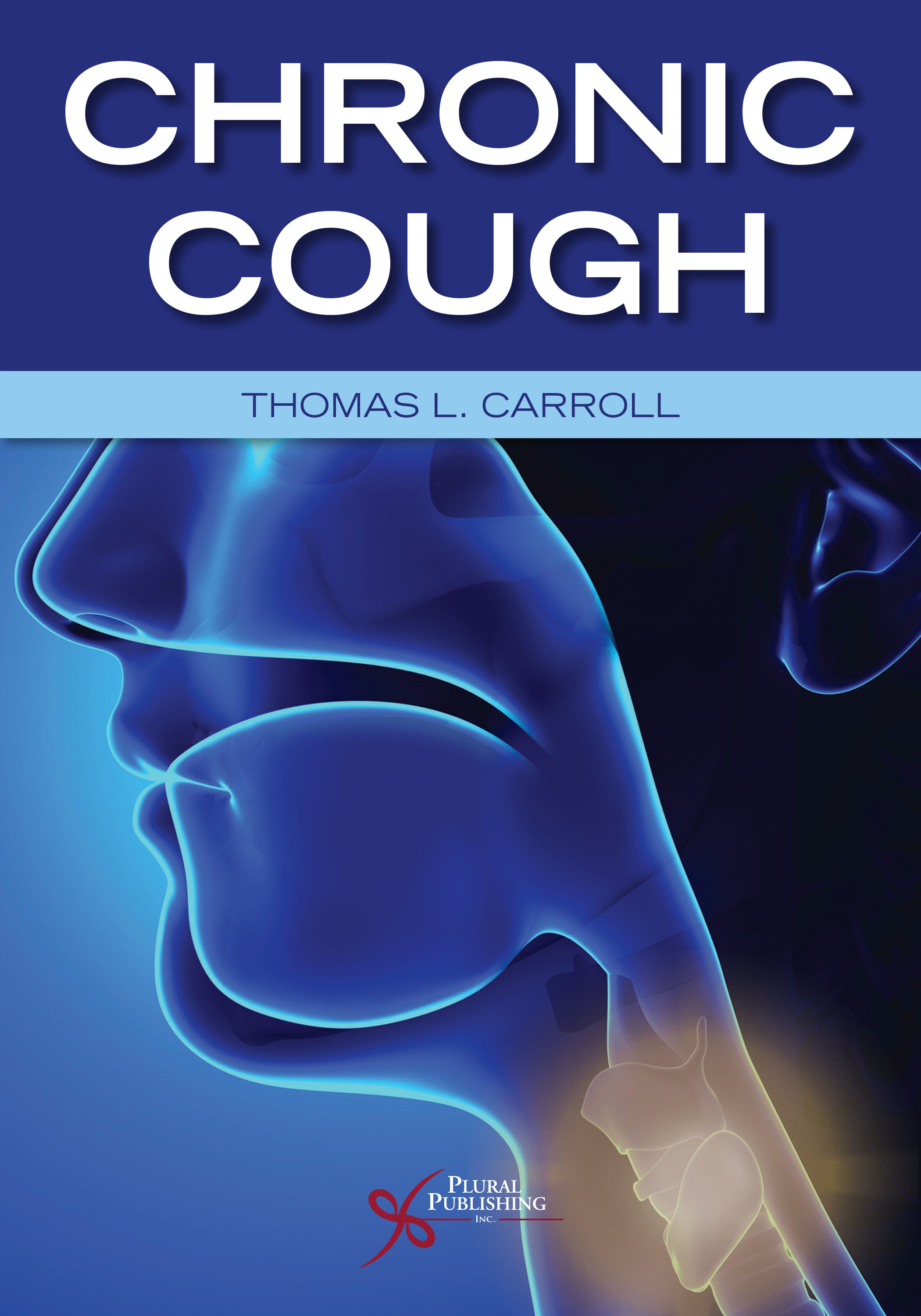
Chronic Cough
First Edition
Thomas L. Carroll
Details: 220 pages, Full Color, Softcover, 7" x 10"
ISBN13: 978-1-63550-070-7
© 2019 | Available
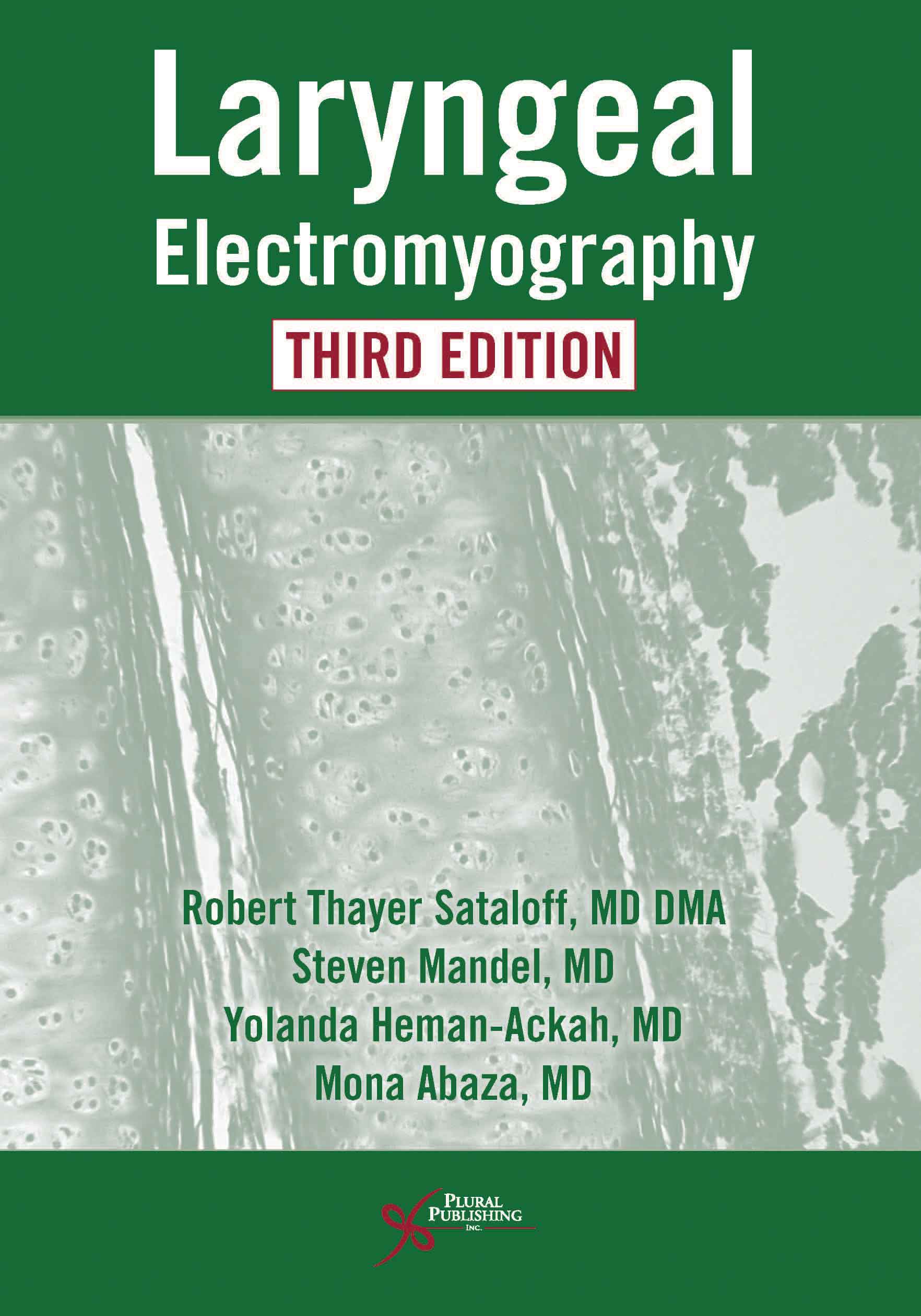
Laryngeal Electromyography
Third Edition
Robert T. Sataloff
Details: 256 pages, B&W, Softcover, 6" x 9"
ISBN13: 978-1-63550-016-5
© 2017 | Available
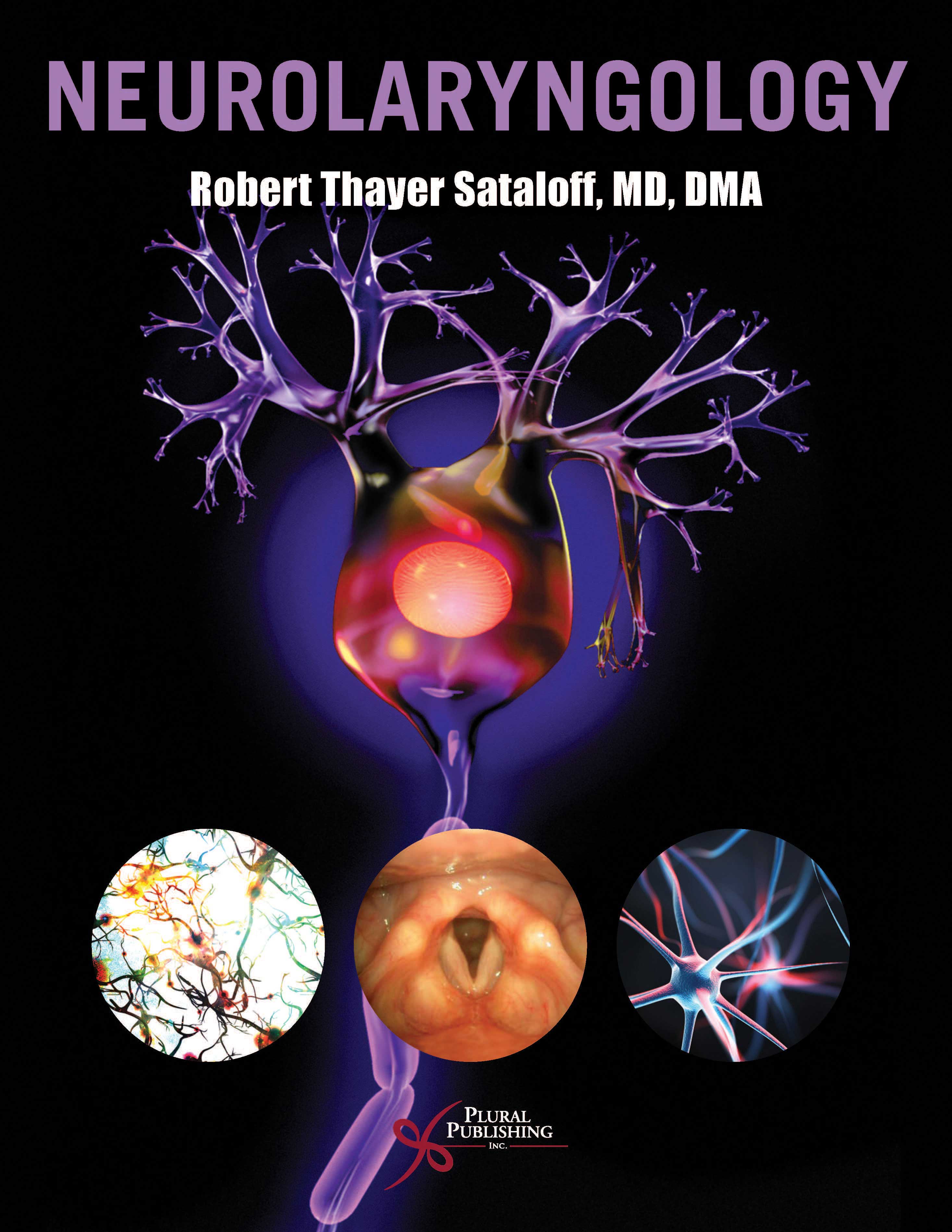
Neurolaryngology
First Edition
Robert T. Sataloff
Details: 1,161 pages, Full Color, Hardcover, 8.5" x 11"
ISBN13: 978-1-94488-383-6
© 2017 | Available
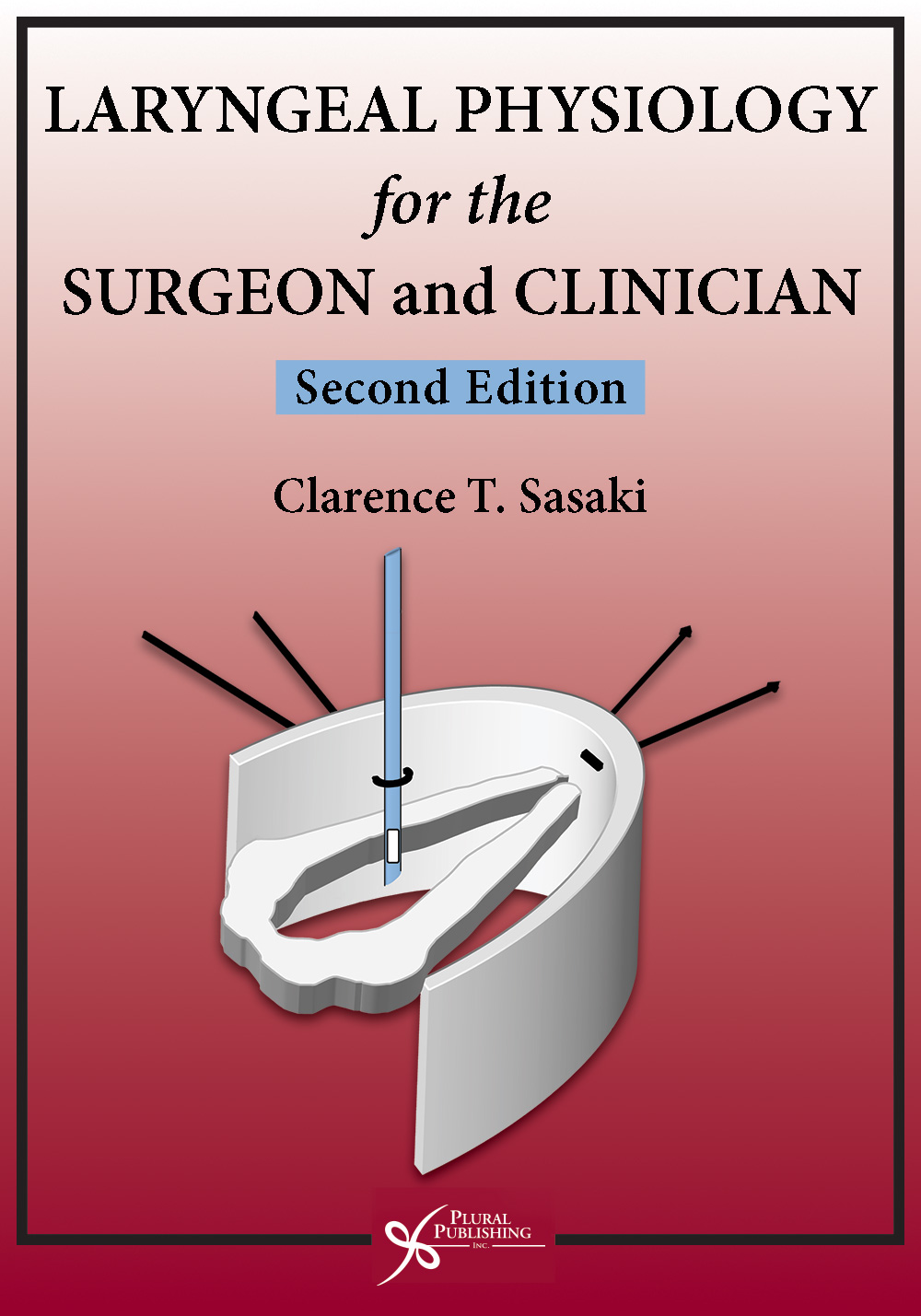
Laryngeal Physiology for the Surgeon and Clinician
Second Edition
Clarence T. Sasaki
Details: 150 pages, 2-Color, Hardcover, 7" x 10"
ISBN13: 978-1-59756-720-6
© 2017 | Available
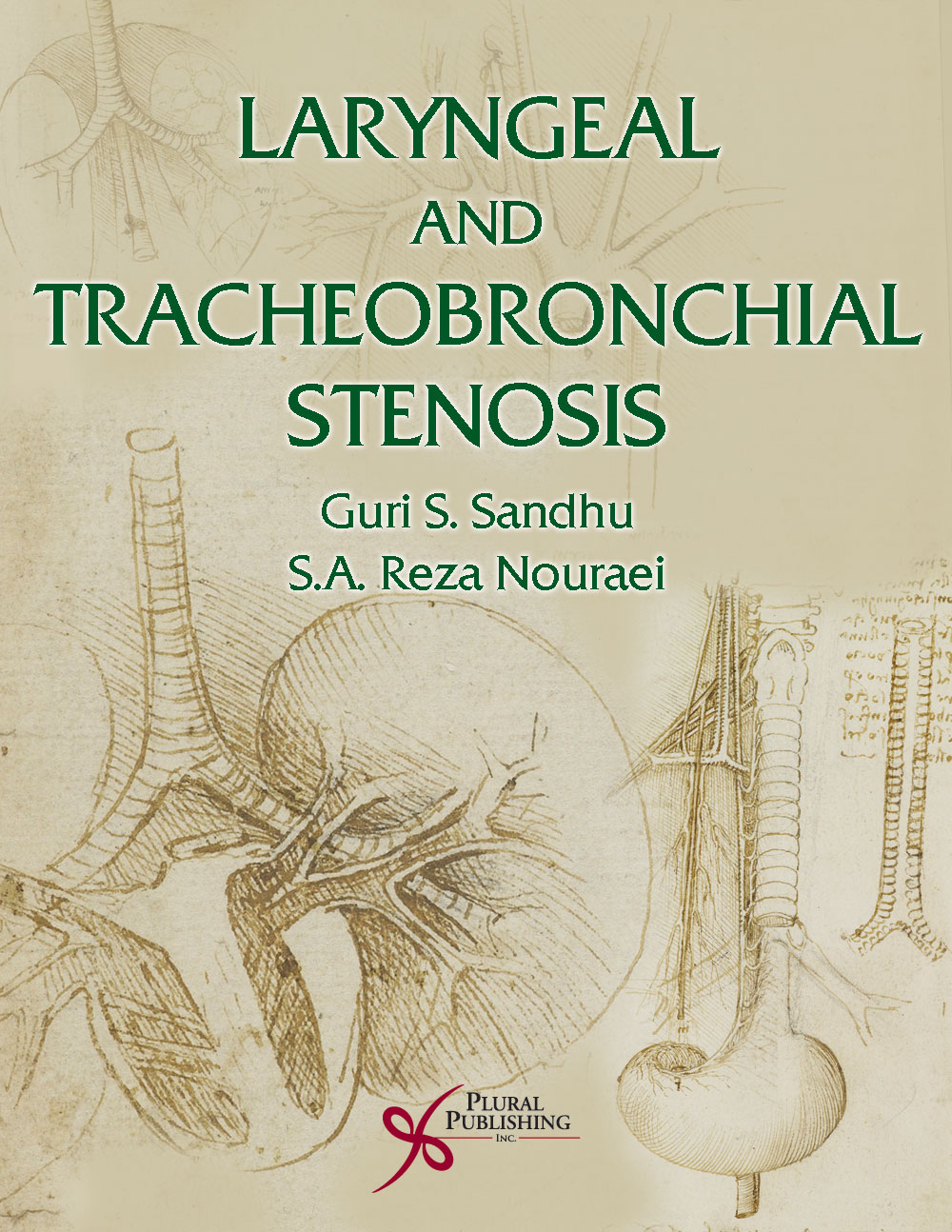
Laryngeal and Tracheobronchial Stenosis
First Edition
Guri S. Sandhu, S.A. Reza Nouraei
Details: 497 pages, Full Color, Hardcover, 8.5" x 11"
ISBN13: 978-1-59756-550-9
© 2016 | Available
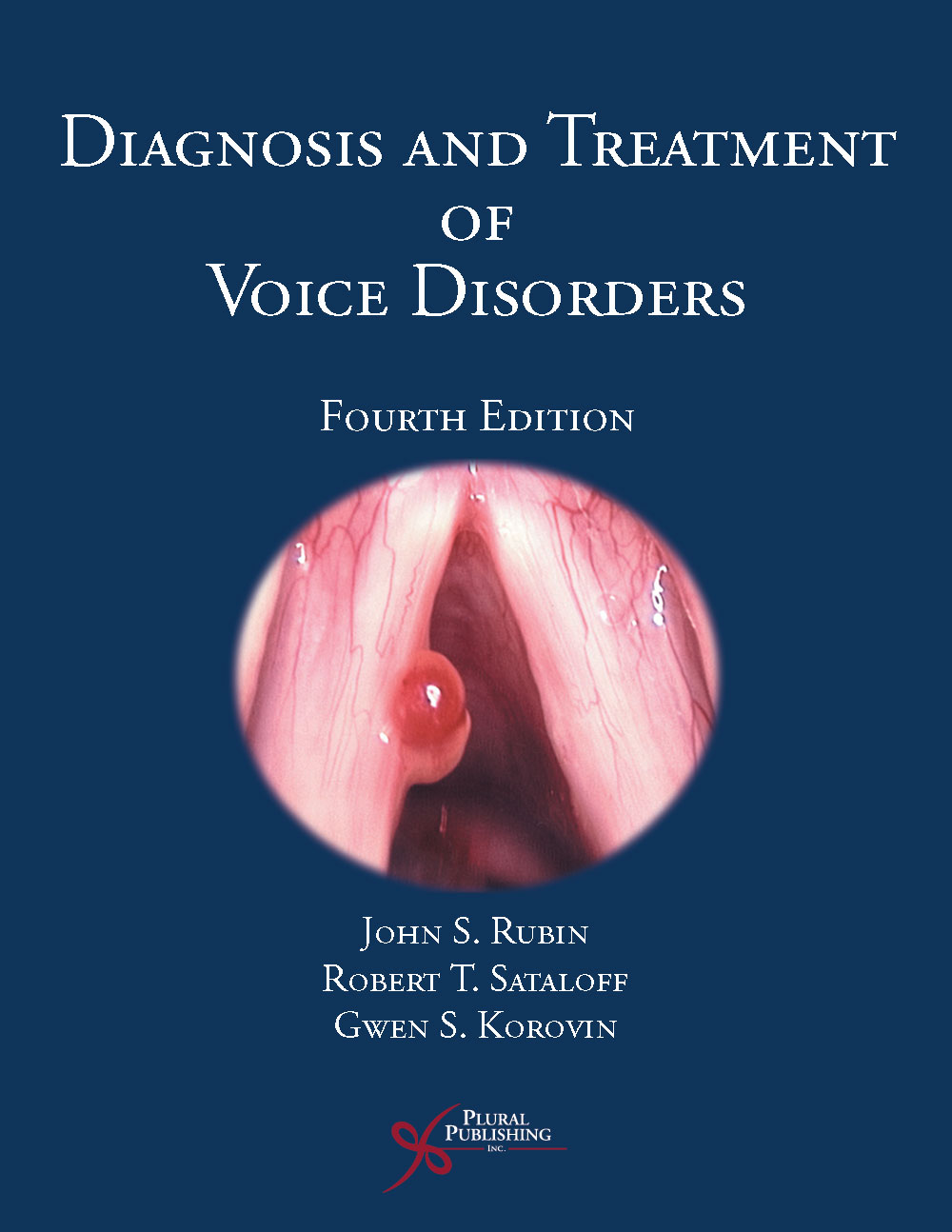
Diagnosis and Treatment of Voice Disorders
Fourth Edition
John Rubin, Robert T. Sataloff, Gwen S. Korovin
Details: 1019 pages, Full Color, Hardcover, 8.5" x 11"
ISBN13: 978-1-59756-553-0
© 2014 | Available
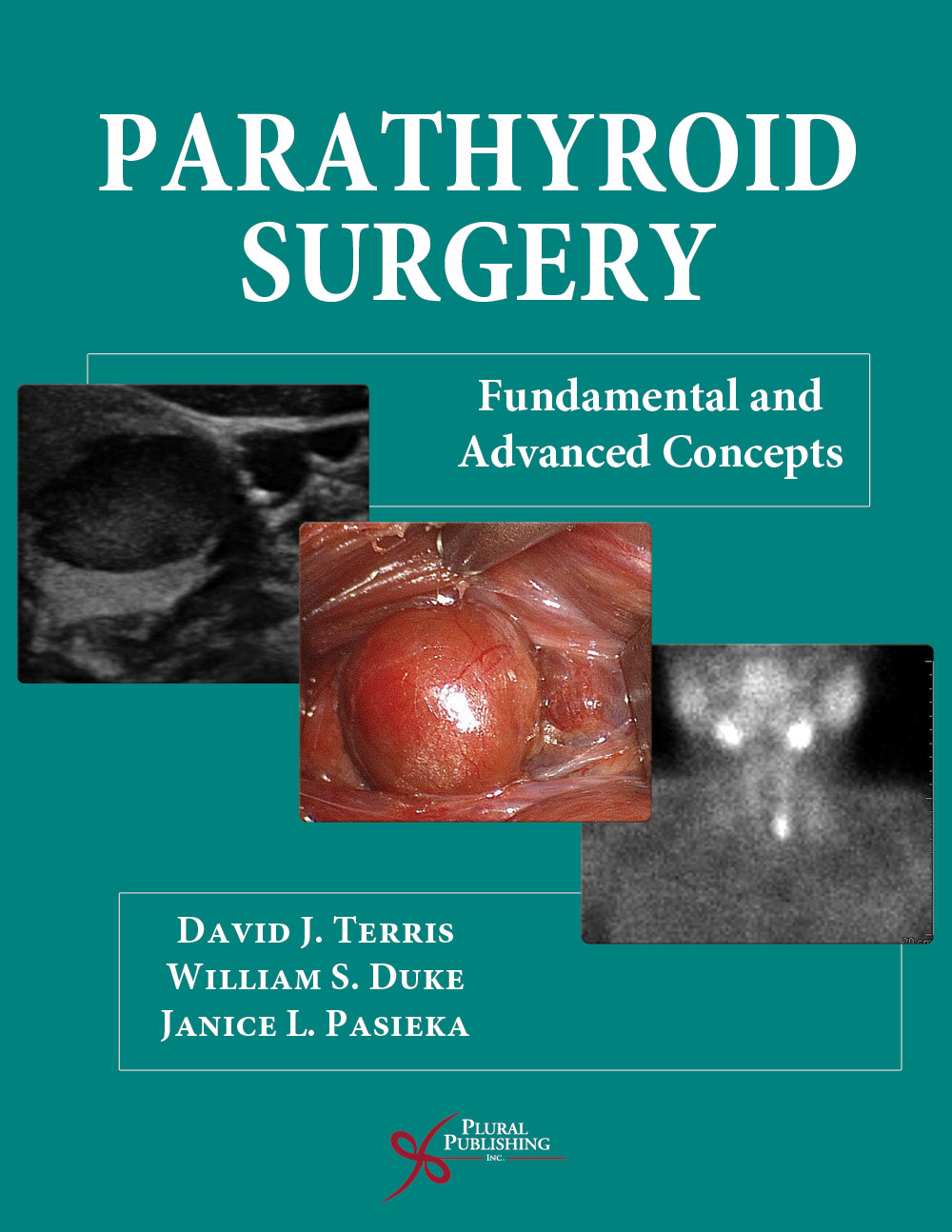
Parathyroid Surgery: Fundamental and Advanced Concepts
First Edition
David J. Terris, William S. Duke, Janice Pasieka
Details: 248 pages, Full Color, Hardcover, 8.5" x 11"
ISBN13: 978-1-59756-541-7
© 2014 | Available
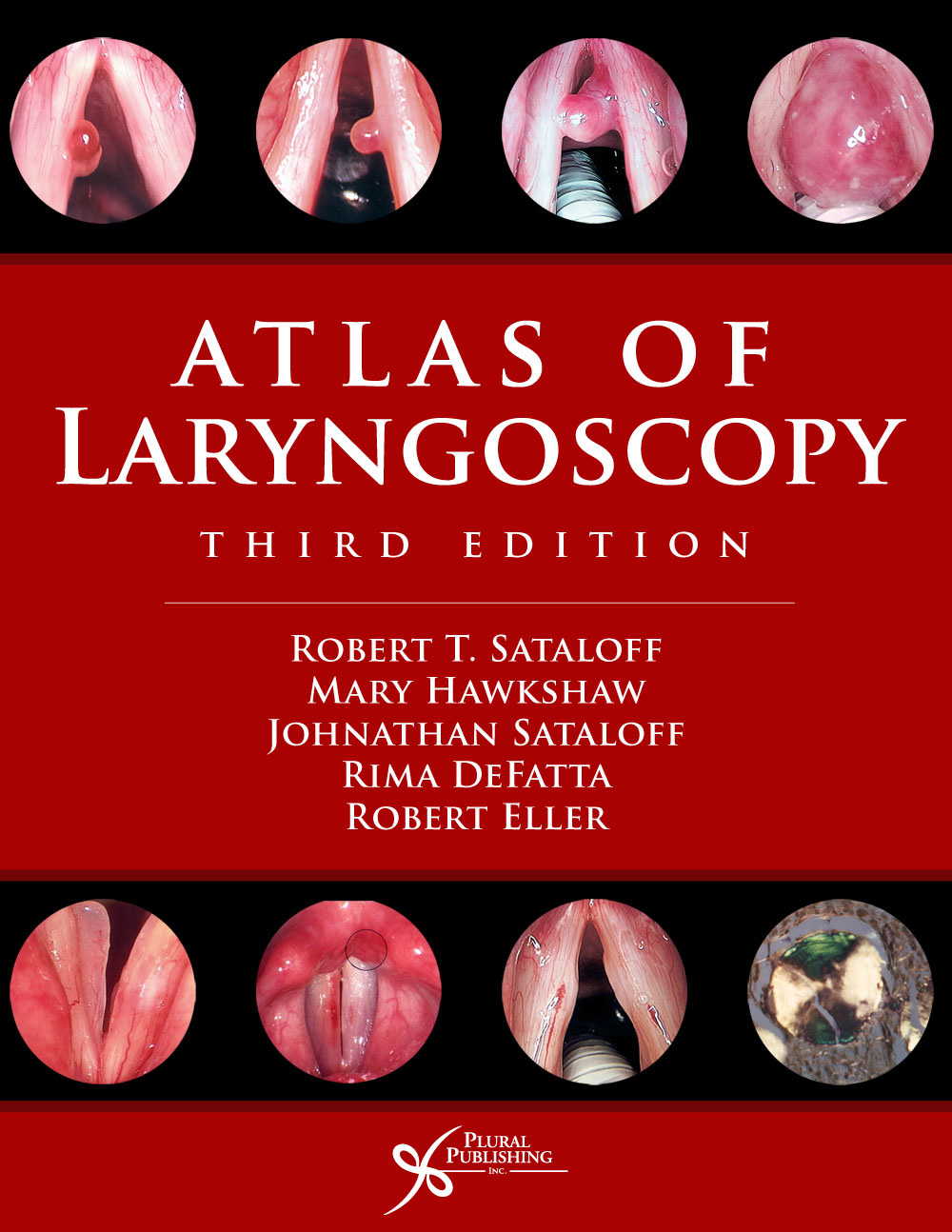
Atlas of Laryngoscopy
Third Edition
Robert T. Sataloff, Mary J. Hawkshaw, Johnathan Brandon Sataloff, Rima A. DeFatta, Robert Eller
Details: 368 pages, Full Color, Hardcover, 8.5" x 11"
ISBN13: 978-1-59756-474-8
© 2013 | Available
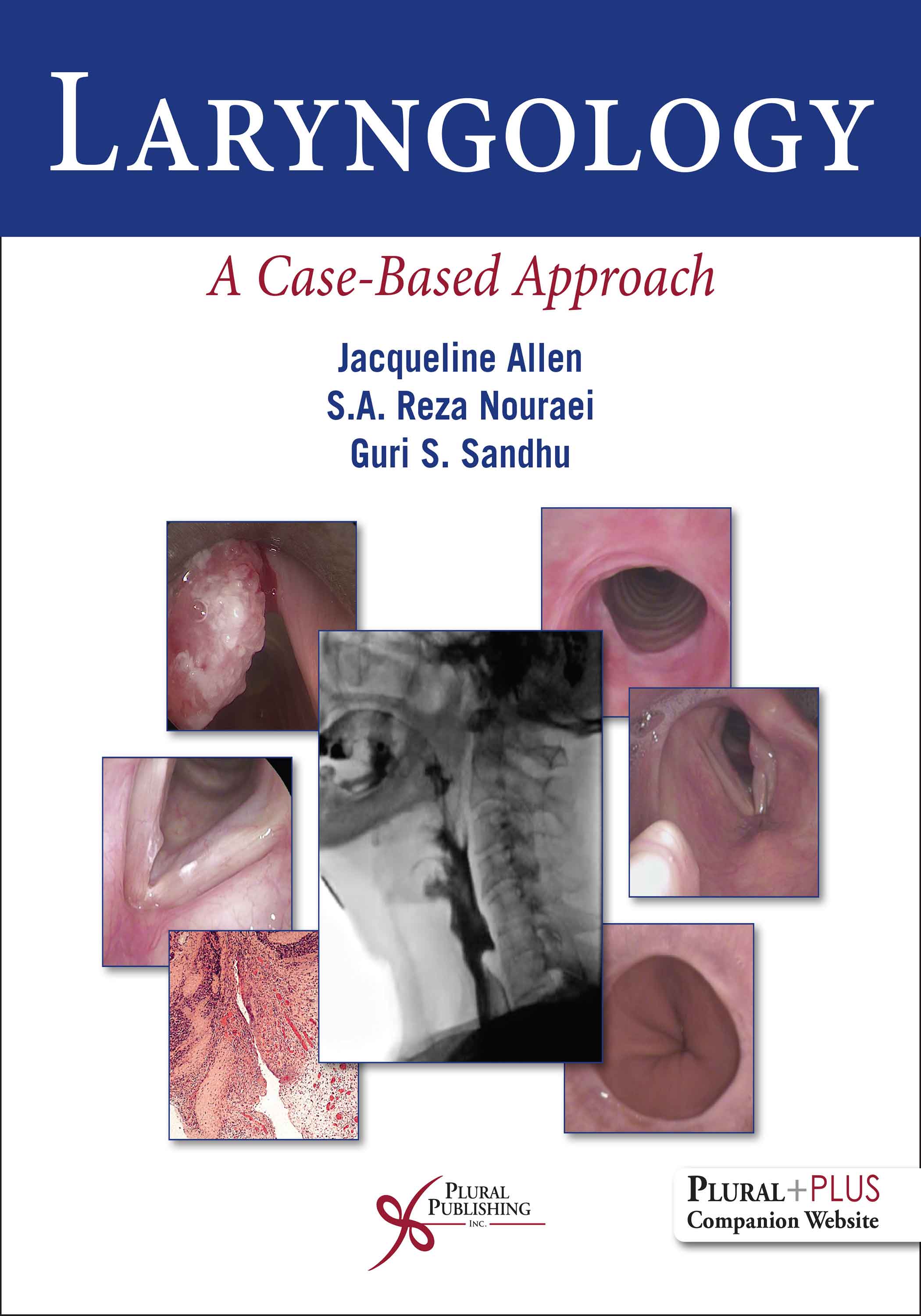
Laryngology: A Case-Based Approach
First Edition
Jacqueline Allen, S.A. Reza Nouraei, Guri S. Sandhu
Details: 615 pages, Full Color, Softcover, 8.5" x 11"
ISBN13: 978-1-94488-359-1
© 2020 | Available
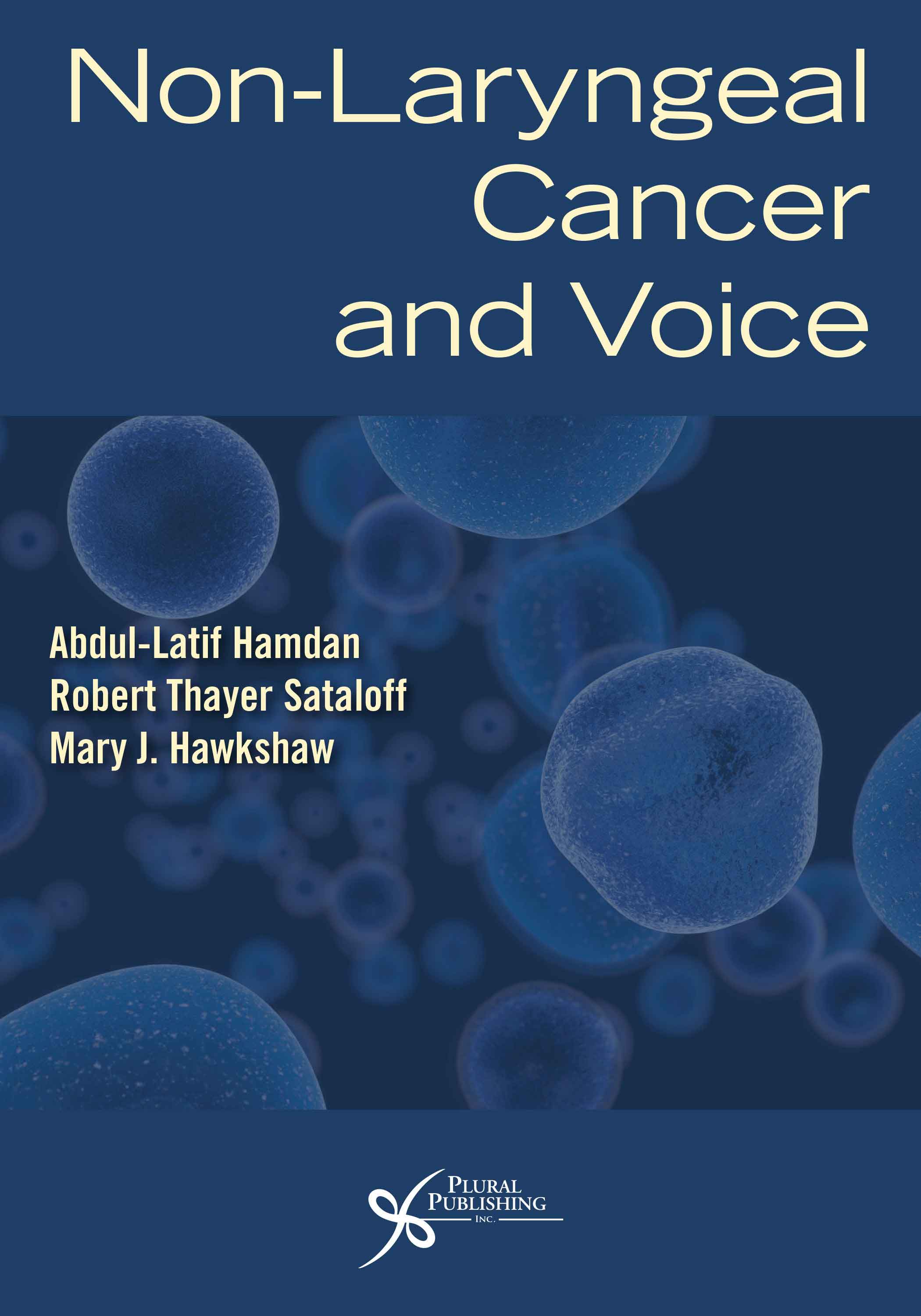
Non-Laryngeal Cancer and Voice
First Edition
Abdul-Latif Hamdan, Robert T. Sataloff, Mary J. Hawkshaw
Details: 271 pages, B&W, Hardcover, 7" x 10"
ISBN13: 978-1-63550-324-1
© 2021 | Available
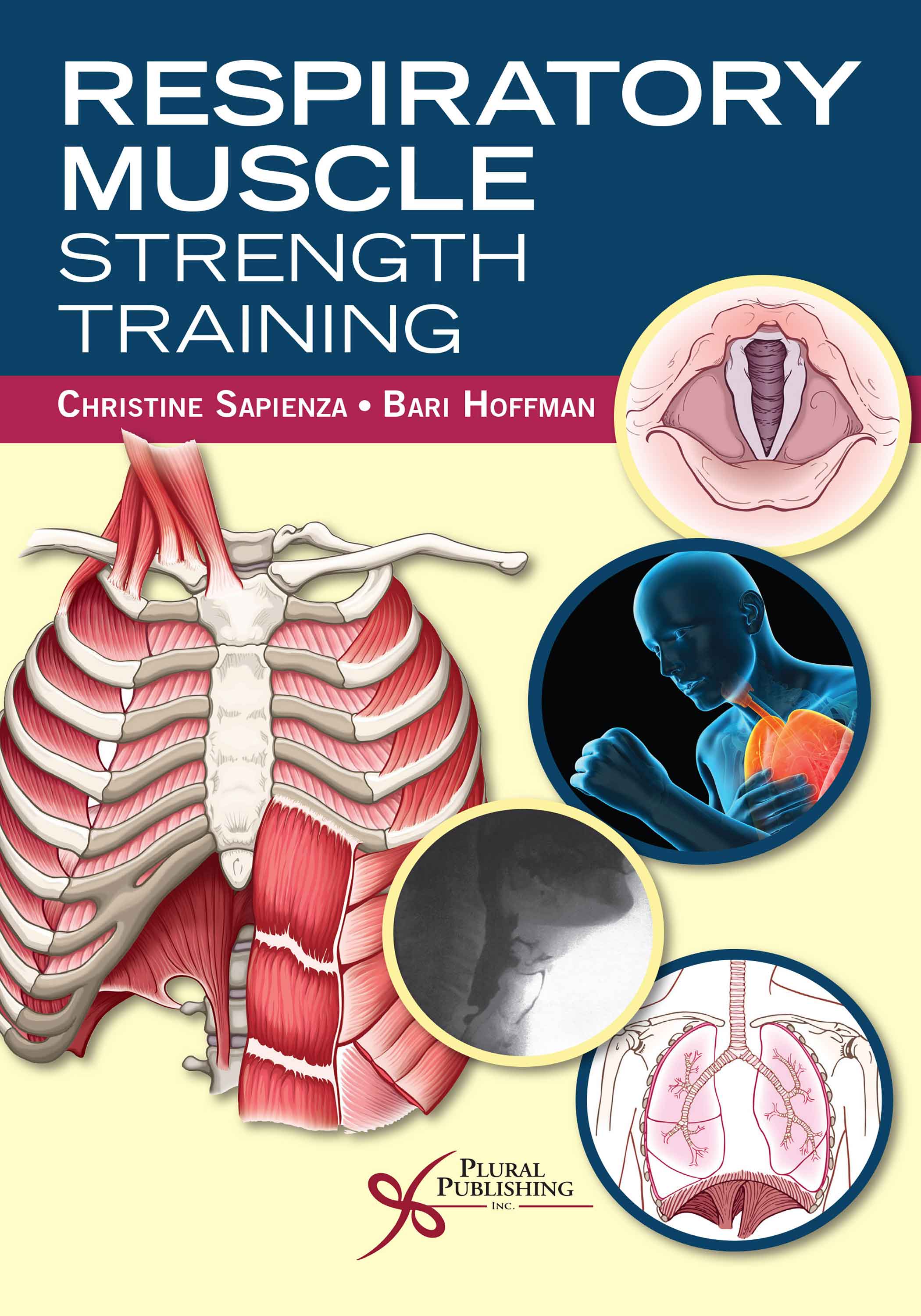
Respiratory Muscle Strength Training
First Edition
Christine Sapienza, Bari Hoffman
Details: 279 pages, B&W, Softcover, 6" x 9"
ISBN13: 978-1-63550-257-2
© 2021 | Available

